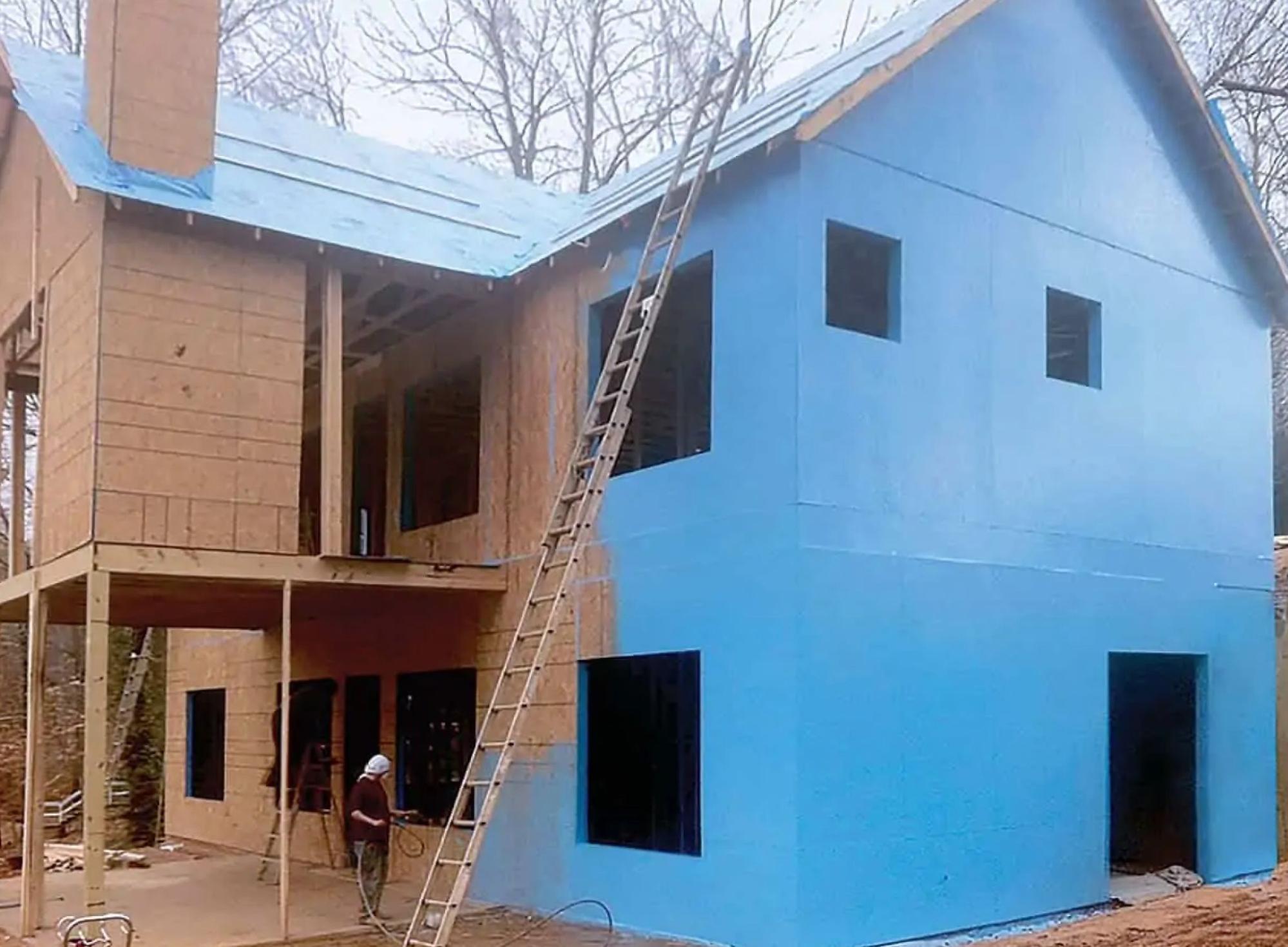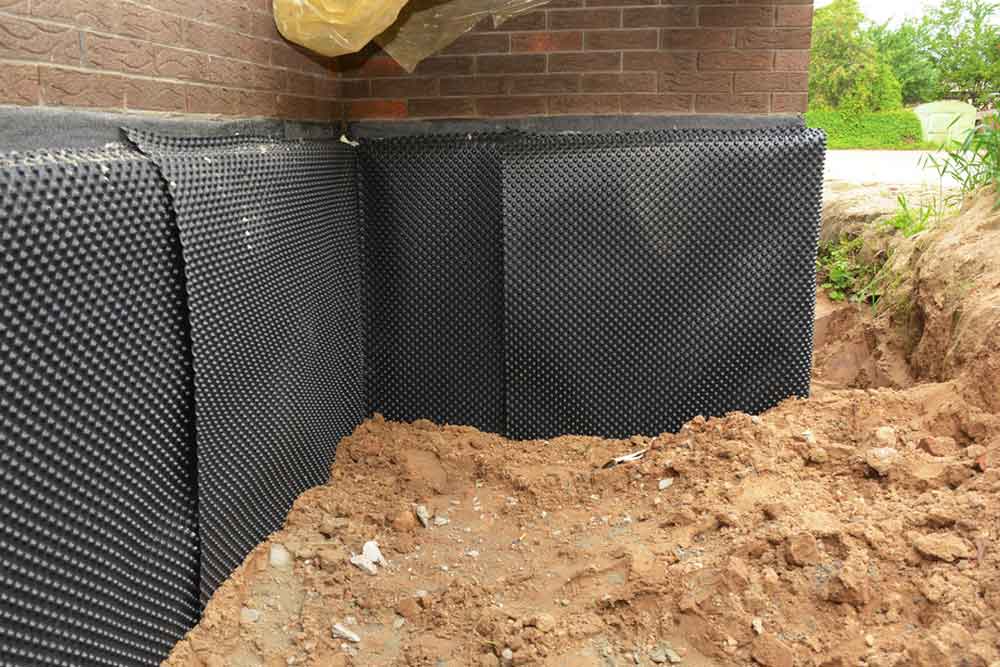Checklist for damp specialist newcastle to identify moisture issues early
Checklist for damp specialist newcastle to identify moisture issues early
Blog Article
Understanding the Significance of Damp Proofing in Preventing Structural Damages
Moist proofing acts as a crucial protection against moisture seepage in buildings. This protective measure can avoid substantial architectural damages, yet numerous building proprietors continue to be uninformed of its value. Recognizing the signs of wetness and comprehending the numerous solutions offered can be important. Neglecting wet proofing can lead to serious repercussions. What are the certain risks and remedies that residential property owners should take into consideration?
What Is Damp Proofing and Just How Does It Function?
Wet proofing acts as a necessary barrier versus moisture intrusion in structures. mould removal newcastle. This procedure entails using certain materials and strategies to avoid water from passing through wall surfaces, floorings, and various other structural components. Generally, wet proofing can be achieved through the setup of moist proof membranes, finishes, or the use of specialized sealants.These techniques work by producing a safety layer that hinders moisture movement, making sure that the indoor environment continues to be healthy and balanced and completely dry. Wet proofing is particularly essential in areas vulnerable to high moisture or groundwater, as it aids keep the integrity of the structure over time.Moreover, efficient wet proofing adds to energy effectiveness by preventing warm loss connected with wet settings. By addressing potential moisture concerns prior to they rise, damp proofing acts as an aggressive procedure in securing buildings from the harmful effects of water damages, eventually lengthening their life-span and keeping their value
Common Indicators of Dampness in a Structure
Moisture concerns within a structure can show up with several recognizable indicators that show the visibility of wetness. One famous indicator is the look of water stains on ceilings or walls, which typically indicates dampness seepage. In addition, peeling or gurgling paint can suggest that excess moisture is trapped beneath the surface, leading to deterioration. An additional usual indicator is the existence of mold and mold, which flourish in moist problems and can typically be identified by their mildewy smell. An increase in humidity levels can create condensation on windows and other surface areas, highlighting moisture issues. Ultimately, uneven or distorted floor covering might indicate underlying wetness that jeopardizes structural honesty. Recognizing these indications early can aid minimize prospective damages and keep a secure living setting. Regular evaluations and timely action are necessary in addressing dampness issues prior to they escalate.
The Risks of Neglecting Damp Proofing
Disregarding damp proofing can bring about considerable threats to a structure's architectural honesty, as moisture accumulation might deteriorate structures and walls. Furthermore, prolonged moisture produces an environment helpful to mold growth, presenting serious carcinogen to owners. Dealing with these dangers is vital for ensuring both safety and long life of the residential property.
Architectural Integrity Hazards
When house owners ignore the importance of efficient damp proofing, they reveal their buildings to considerable architectural honesty risks. Extended dampness seepage can cause the development of mold and mildew, which damages fundamental aspects and can endanger total security. In addition, excess dampness can erode concrete and brickwork, resulting in fractures and architectural failures. Wood components are specifically at risk; they can rot and lose load-bearing capacity, posing severe dangers to the building's framework. Furthermore, unattended damp problems may draw in parasites, such as termites, which further aggravate architectural degeneration. Eventually, ignoring damp proofing measures can lead to expensive repair services and prospective security hazards, underscoring the necessary role of aggressive damp administration in preserving the integrity of homes.
Wellness Hazard Issues
How can a seemingly minor oversight lead to serious health and wellness risks? Ignoring wet proofing can produce a setting for mold and mildew growth, which presents considerable health and wellness risks. Mold and mildew spores can trigger sensitive reactions, respiratory problems, and other wellness complications, specifically in vulnerable populations such as youngsters, the senior, and individuals with pre-existing conditions. In addition, relentless wetness can bring in insects like pests and rodents, which lug diseases that better jeopardize wellness. The presence of wetness likewise adds to a decline in interior air high quality, exacerbating asthma and various other respiratory ailments. The failing to attend to moist issues not only intimidates architectural honesty yet also endangers the health of occupants, highlighting the critical requirement for effective damp proofing steps.
Various Kinds of Damp Proofing Solutions
Although various aspects can add to damp concerns in structures, selecting the appropriate moist proofing solution is important for maintaining structural stability. Numerous choices are offered, each tailored to particular conditions.One usual remedy is a damp-proof membrane (DPM), commonly made of polyethylene or bitumen, which is set up in walls and floorings to avoid moisture ingress. One more alternative is damp-proof training courses (DPC), which are layers of water-proof material put within wall surfaces to block increasing damp.Chemical damp proofing involves injecting waterproofing chemicals right into wall surfaces to develop an obstacle against moisture. Additionally, outside therapies such as tanking, which involves using a water resistant layer to the beyond structures, can be effective in protecting against water penetration.Each option has its benefits and is selected based on the building's details concerns, ecological conditions, and long-term maintenance factors to consider, ensuring suitable security against damp-related damage.

The Price of Damp Damage vs. Prevention
Recognizing the economic ramifications of wet damages contrasted to prevention highlights the relevance of positive actions. The costs associated with moist damage can be significant, consisting of repair services to structural aspects, mold remediation, and potential health-related costs. Property owners might face significant financial pressure if considerable damage occurs, bring about enhanced insurance policy costs and lost building value.In comparison, purchasing damp proofing remedies is normally much more cost-effective. First costs for prevention techniques, such as setting up damp-proof membrane layers or boosting water drainage systems, are typically exceeded by the lasting cost savings from preventing pricey repair work. Furthermore, protecting against wet concerns can boost a residential property's general value and appeal, making it a smart investment. When assessing the price of damp damage versus prevention, it becomes clear that taking positive actions can protect financial passions and keep the stability of the property in time.
Picking the Right Damp Proofing Approach for Your Building
Which damp proofing method is most ideal for a particular residential property often depends upon numerous factors, consisting of the building's age, existing dampness problems, and neighborhood environmental problems. For older frameworks, typical methods such as asphalt membranes or cementitious finishings might be more effective, as they can supply a robust obstacle versus climbing moist. On the other hand, newer buildings might profit from modern services like infused damp-proof programs, which are less intrusive and can be tailored to particular wetness challenges.Additionally, residential or commercial properties in areas with high water tables or heavy rainfall might call for more sophisticated strategies, such as cavity wall surface drainage systems or outside waterproofing. Home owners ought to likewise take into consideration the particular products made use of in their building's construction, as some techniques might not be suitable. Eventually, a detailed evaluation by a specialist can assist homeowner in picking the most reliable wet proofing method customized to their one-of-a-kind situations.
Maintaining Your Damp Proofing System With Time
Routine maintenance of a damp proofing system is essential for ensuring its lasting performance and shielding a residential property from moisture-related damage. Homeowner must perform regular evaluations to identify any kind of signs of wear or compromise in the moist proofing layer. This consists of checking for fractures, peeling off paint, or mold and mildew growth, which may suggest dampness intrusion.Additionally, it is recommended to clean seamless gutters and downspouts regularly to avoid water buildup around the foundation. Reapplying sealants or membrane layers might be required if deterioration is observed.Engaging professional solutions for regular evaluations can additionally boost the toughness of the system. These professionals can give insights into potential susceptabilities and advise prompt repair work.
Regularly Asked Questions
The Length Of Time Does Damp Proofing Treatment Last Prior To Needing Repair Work?
The long life of wet proofing treatment typically varies from 10 to three decades, depending upon variables such as the approach used, ecological conditions, and upkeep techniques. Normal examinations can aid figure out when repair services may be needed.
Is Do It Yourself Damp Proofing Effective Compared to Professional Providers?
The effectiveness of do it yourself moist proofing differs considerably. damp proofing newcastle. While some individuals may accomplish acceptable results, professional services typically guarantee thorough remedies, leveraging know-how and quality materials to stop future issues extra accurately than the majority of do it yourself attempts
Can Damp Proofing Improve Indoor Air High Quality?
The question of whether moist proofing can enhance indoor air top quality emerges often. Effective wet proofing reduces moisture levels, therefore minimizing mold growth and allergens, inevitably adding to a healthier interior environment for owners.
Exist Specific Rules for Damp Proofing in Various Areas?
Regulations for damp proofing differ by region, typically influenced by neighborhood building codes and ecological conditions. Conformity guarantees efficient wetness control, safeguarding structures and promoting safety, which highlights the need for adherence to these specific laws.

What Are the Long-Term Benefits of Appropriate Damp Proofing?
The long-term benefits of proper damp proofing include enhanced architectural integrity, decreased maintenance prices, boosted interior air quality, and enhanced residential property value. These benefits add to a much healthier living environment and prolonged lifespan of buildings. Usually, damp proofing can be accomplished through the installment of moist proof membranes, layers, or the usage of specialized sealants.These techniques work by developing a protective layer that inhibits moisture activity, making sure that the indoor setting continues to be dry and healthy and balanced. Wet proofing is specifically essential in areas prone to high moisture or groundwater, website as it helps maintain the integrity of the structure over time.Moreover, effective moist proofing adds to energy effectiveness by protecting against warm loss associated with moist settings. Overlooking wet proofing can lead to considerable threats to a structure's structural integrity, as wetness accumulation might weaken structures and walls (damp proofing newcastle). Various elements can contribute to damp issues in buildings, picking the appropriate moist proofing solution is vital for protecting architectural integrity. Which damp proofing technique is most appropriate for a specific building usually depends on different elements, including the building's age, existing moisture problems, and local environmental conditions
Report this page